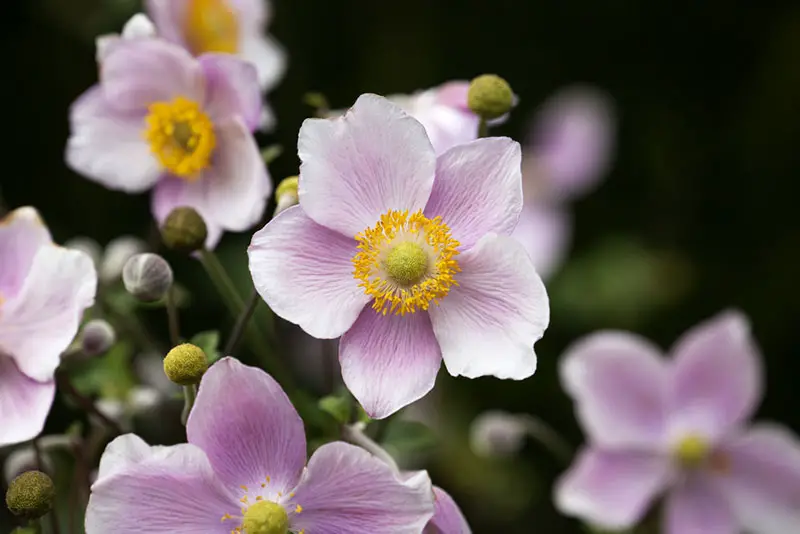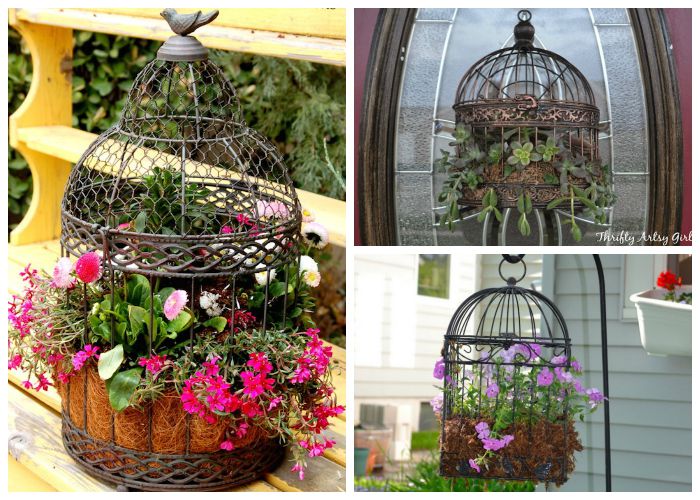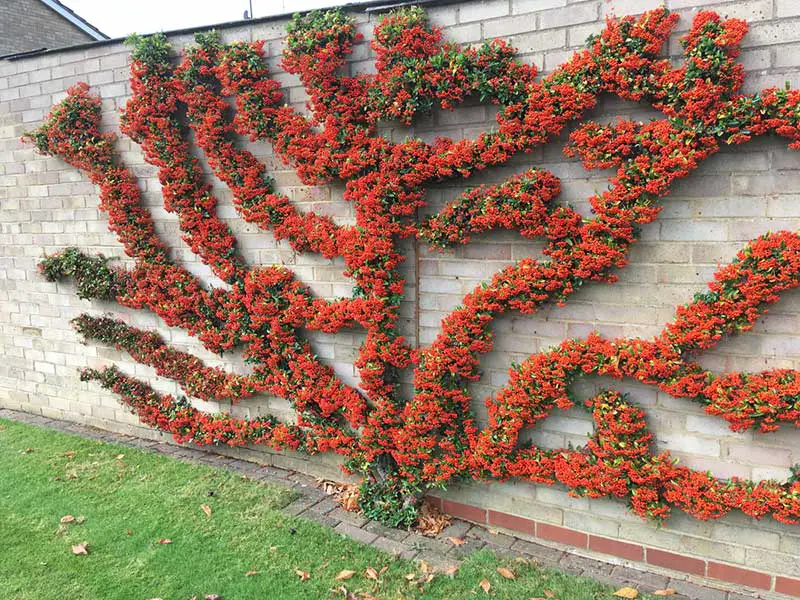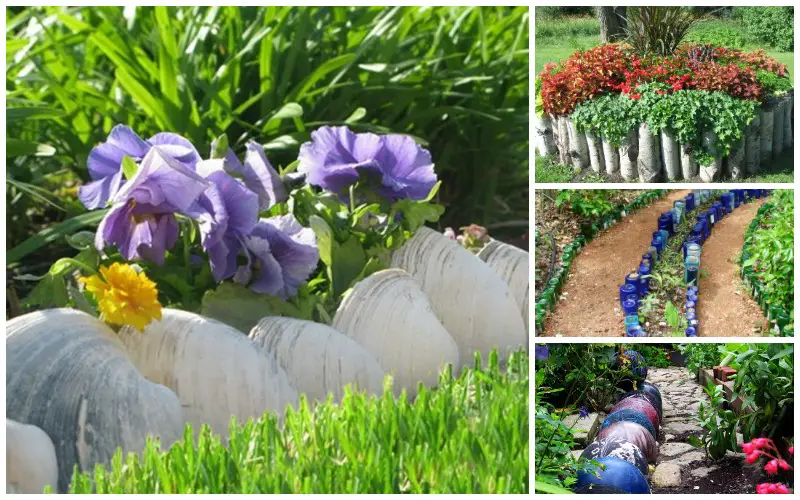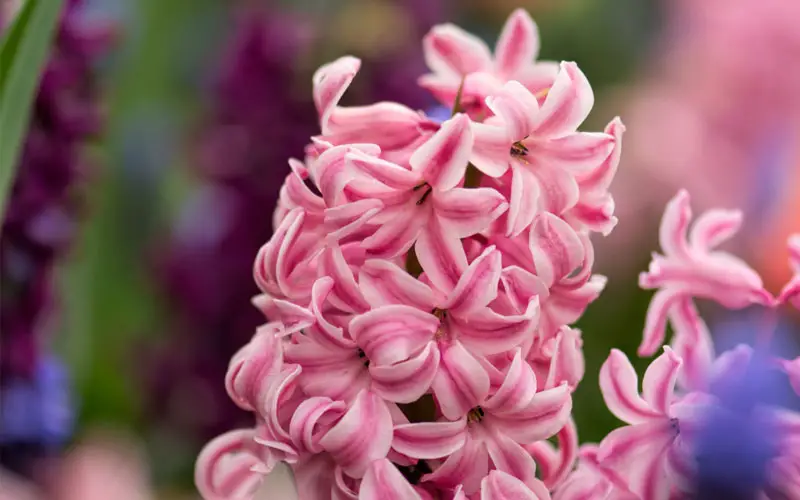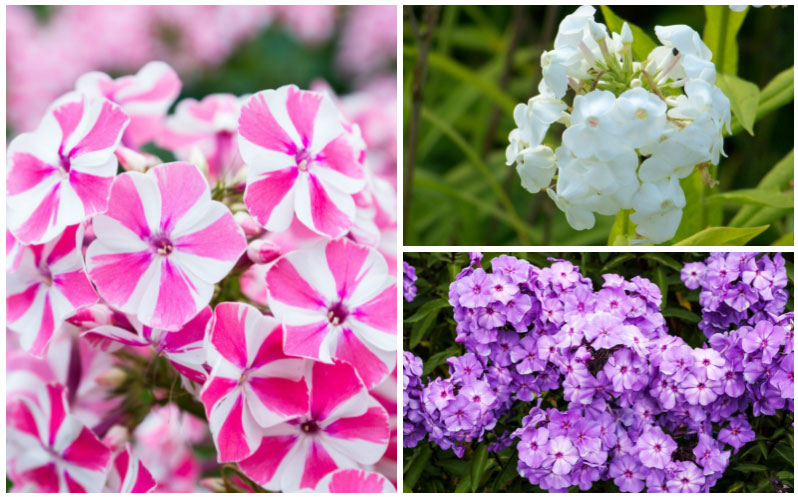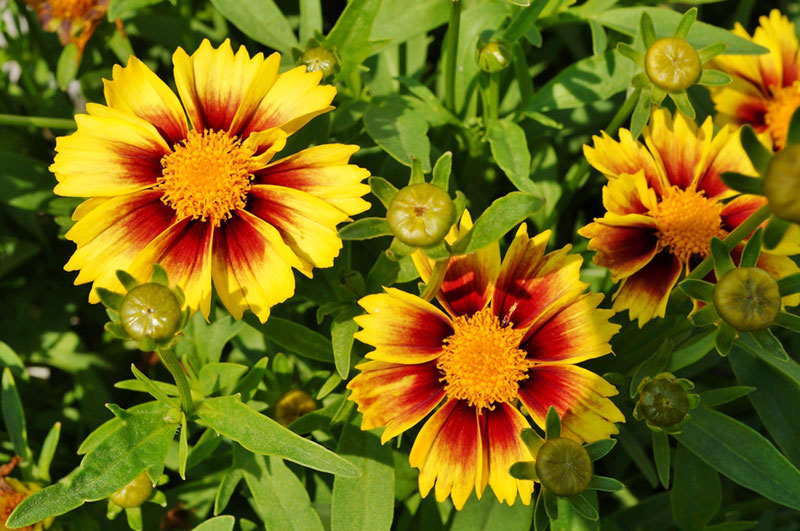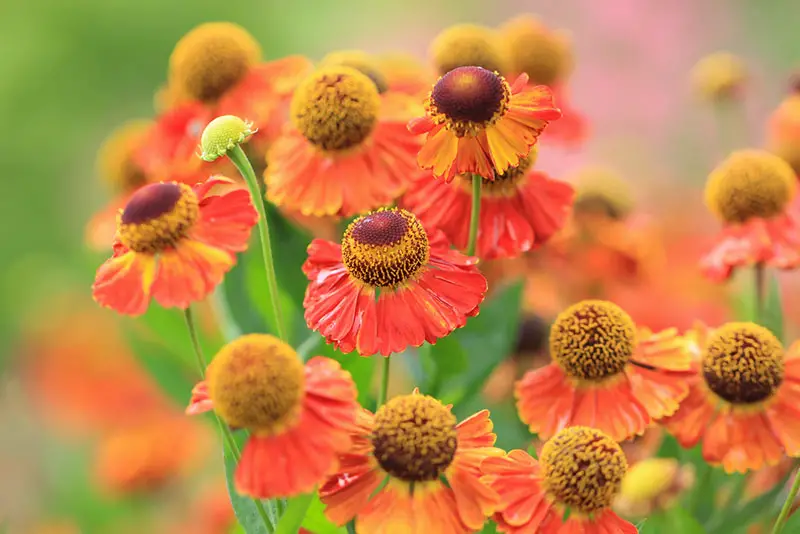
As summer comes to a close, we watch the leaves turn, enjoy baked goods, and partake in fun autumn activities. Unfortunately, this time also means that many gardens are losing all of their bright bold colors and preparing to hibernate for the coming winter.
This is a sad time for many, but if you planned ahead you might be enjoying some of the late-bloomers of the year.
If you would like to prepare your garden for next year, we have compiled a list of plants that bloom in late summer and remain stunning well into the fall.
Many of these plants are hardy, easy to grow and maintain, and come in a variety of bright colors to keep your yard lively even as the weather starts to turn. Take a look at these gorgeous flowers and get a jump on your garden plans so that you can enjoy a riot of color in your garden throughout the seasons.
1. Anise Hyssop
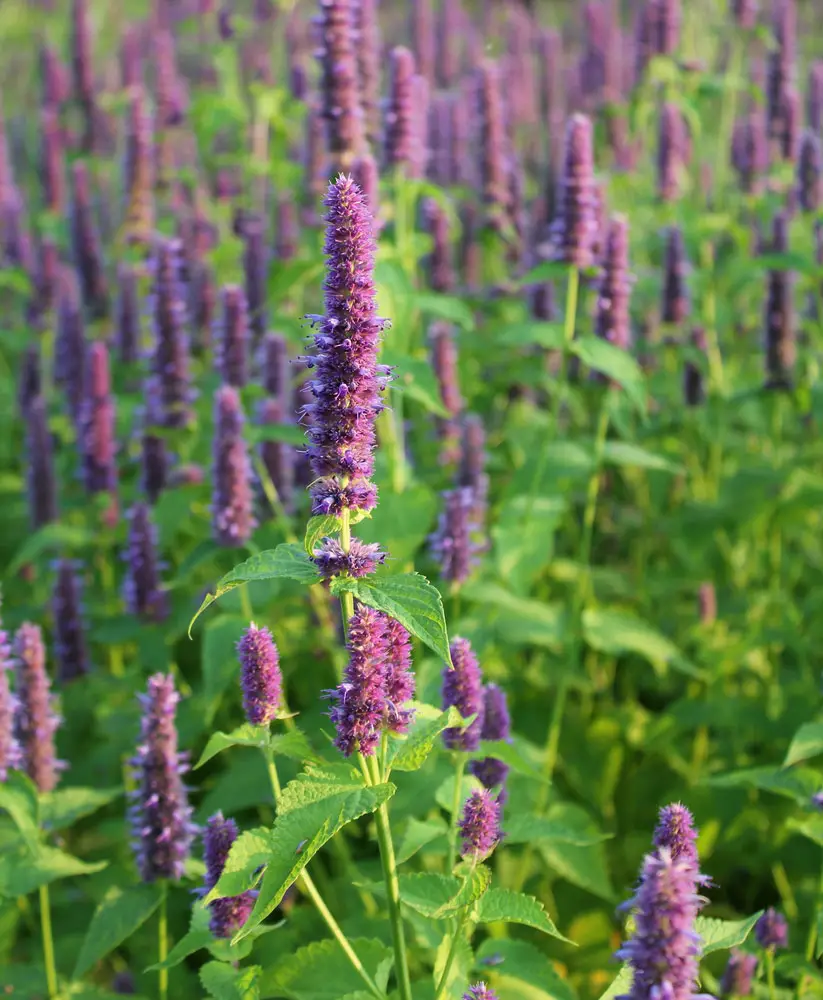
Anise Hyssop is a simple herb to grow. The leaves resemble catnip leaves but are larger and the lavender-blue flowers taste and smell like anise (licorice) hence the name, even through the plant belongs to the mint family. They bloom from June to September.
2. Aster

Aster is the Latin term for “star” and the name fits the spiky petaled head of the Aster plant. Aster plants should be planted in the spring and will bloom during the summer and into the late fall. The blooms come in several different colors and are known to attract several different species of butterflies.
3. Colchicum
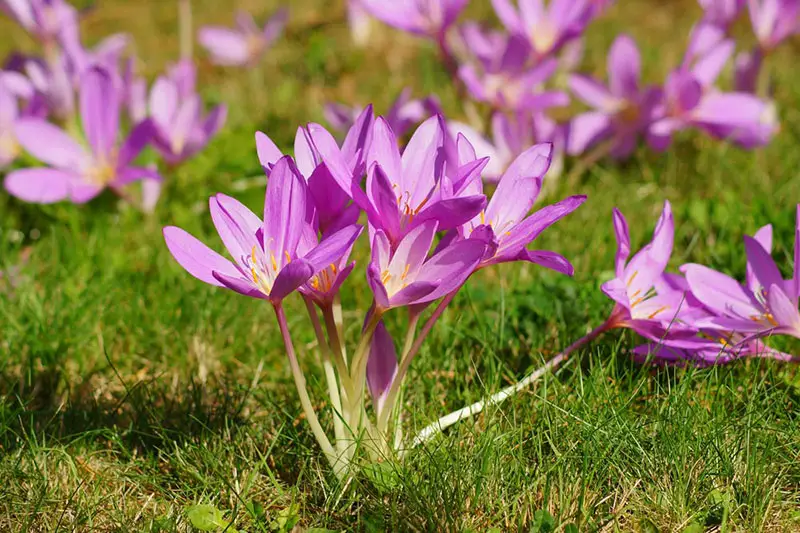
Known as the “autumn crocus,” this gorgeous flower is a low maintenance plant that blooms in the fall. Grown from a bulb, they come in vibrant pink and white, but be wary: all parts of the plant are poisonous — so be sure to keep it away from children who might be tempted to eat its candy-color blooms. Because it’s poisonous, however, it’s typically ignored by animals so you don’t have to worry about these being eaten.
4. Fall Crocus
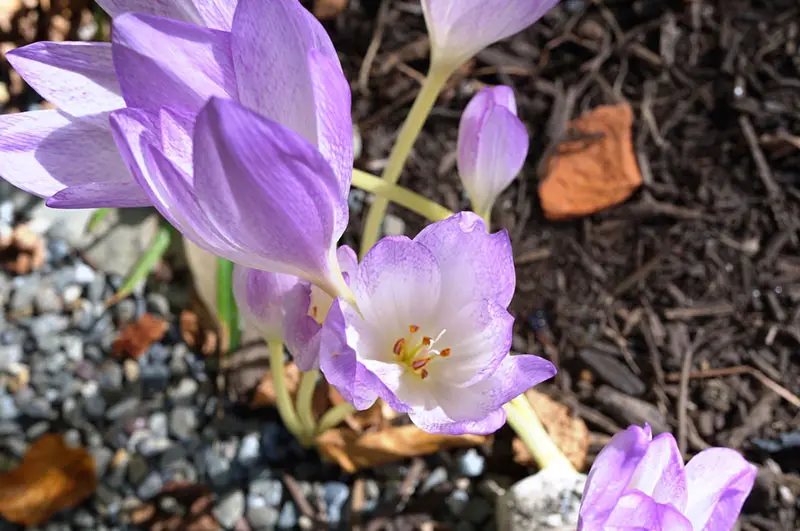
In the same genus of the Colchicum, the fall crocus is just as easy to maintain but comes in a wider variety of colors. They bloom quickly, lasting for only two or three weeks, and then lie dormant until spring when several large leaves will appear and remain until early summer. The flowers will bloom again in September.
5. Goldenrod
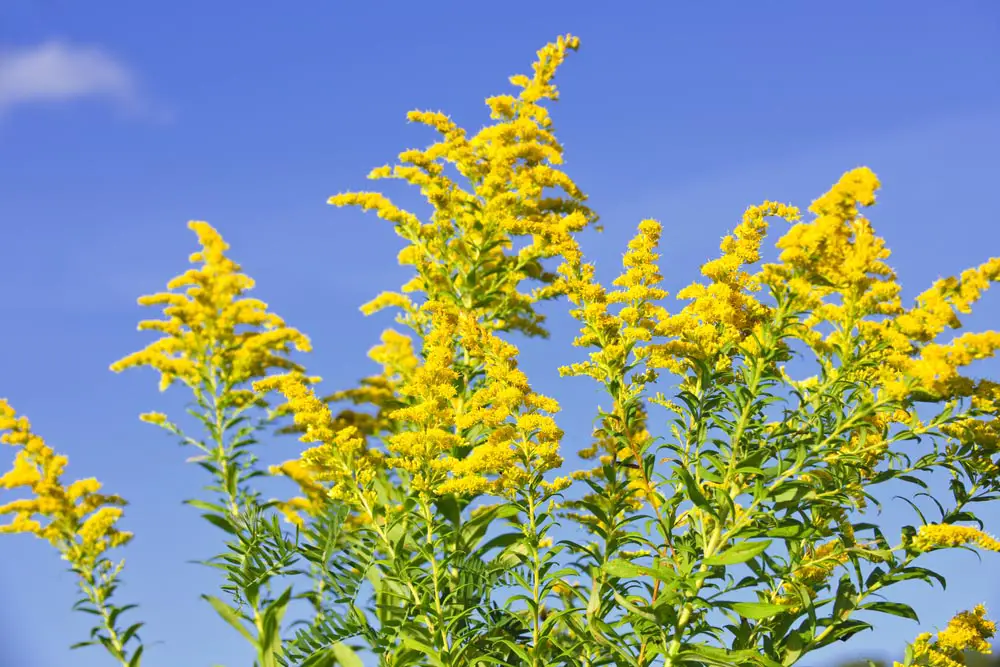
Often considered a weed in the U.S., these hardy plants spring up in the summer landscape and persist into the fall. They need little care and are drought resistant; clippings can be taken in the spring and planted in the garden. They can grow in many different kinds of soil as long as it’s well drained. They are also great for attracting butterflies.
6. Helenium

Velvety, flame-colored heleniums add a burst of warm color to a late summer garden. The grow tall and have daisy-like blooms surrounding the soft center. They come in shades of orange, red, gold, and mahogany and bloom into the fall. They do well in sunny areas with moist but well-drained soil.
7. Japanese Anemone
Fall anemones add color to woodland gardens from late summer to late fall in shades of pink and white. These Asian natives bear large, cup-shaped blossoms on graceful stems that sway above clumps of dark green, maple-like leaves. All anemones are poisonous if ingested, so they will be left alone by animals.
8. Leadplant
Source: Wikimedia
Lead plant is an ideal ground cover if you want to put on a late-season show. The electric-blue flowers begin blooming in late summer and the leaves turn a brilliant burgundy red in the fall.
9. Mexican Sage
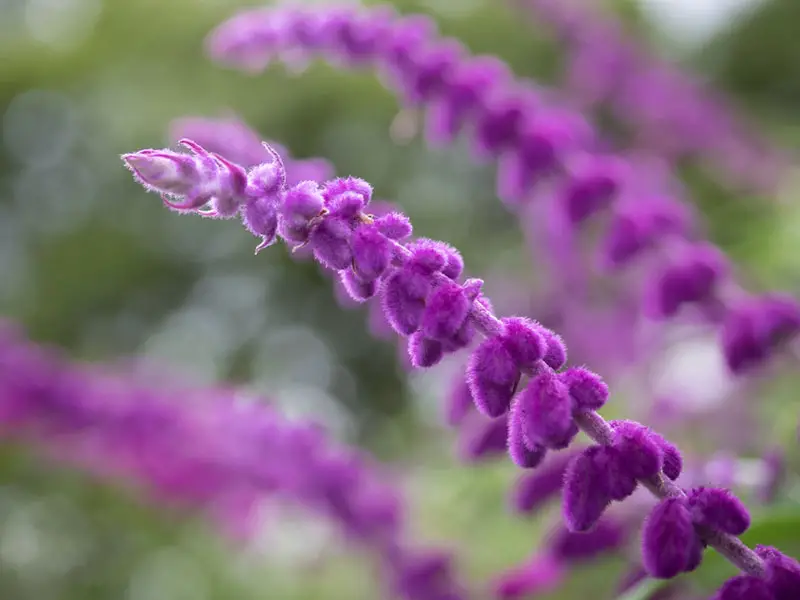
This shrub produces white or purple flowers covered in soft purple calyces from late summer to the first frost. They are some of the showiest plants for growing in containers, or as borders; not to mention butterflies and hummingbirds love them. They grow about three feet tall and are very bushy in appearance.
10. Monk’s Hood
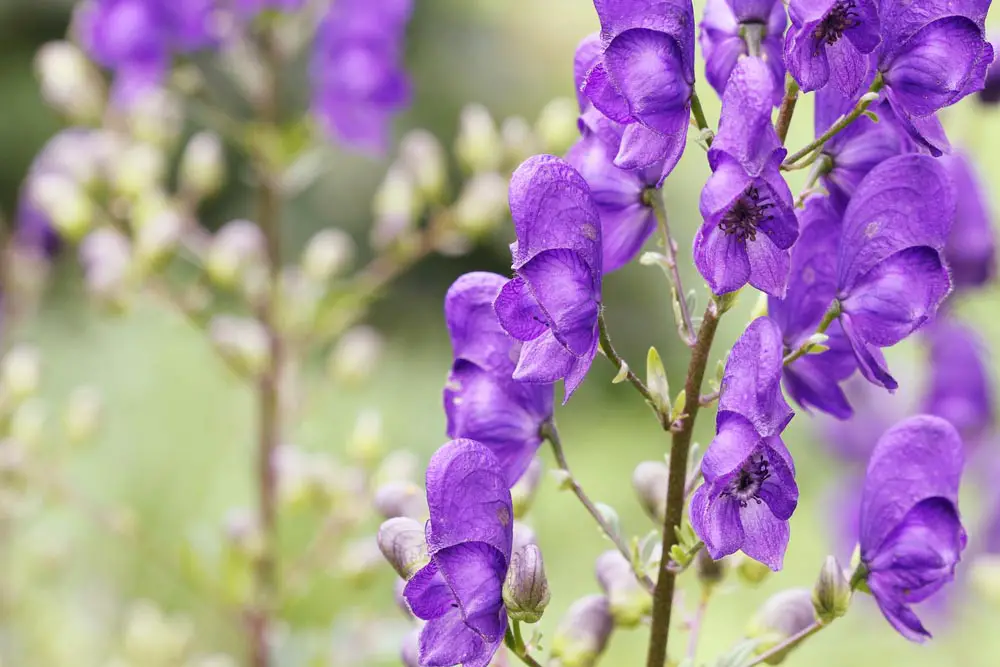
Monkshood, also known as wolfsbane, is an herbaceous wildflower that is commonly found growing in mountain meadows throughout the northern hemisphere. It blooms in the late summer to early fall with showy spires of purple/blue flowers. However, it is moderately difficult to grow and once planted, does not like to be moved.
11. Perennial Sunflower
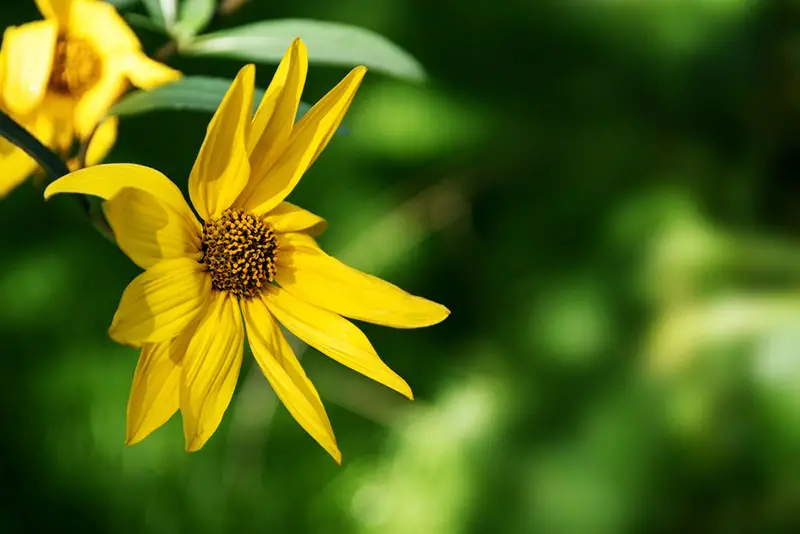
Visually similar to annual sunflowers, the kind everyone thinks of when the hear ‘sunflower’, perennial sunflowers do not need to be replanted every year and have small seed heads instead of the broad face of their annual siblings. Perennial sunflowers tend to bloom in the late summer and into the fall.
12. Red Spider Lily
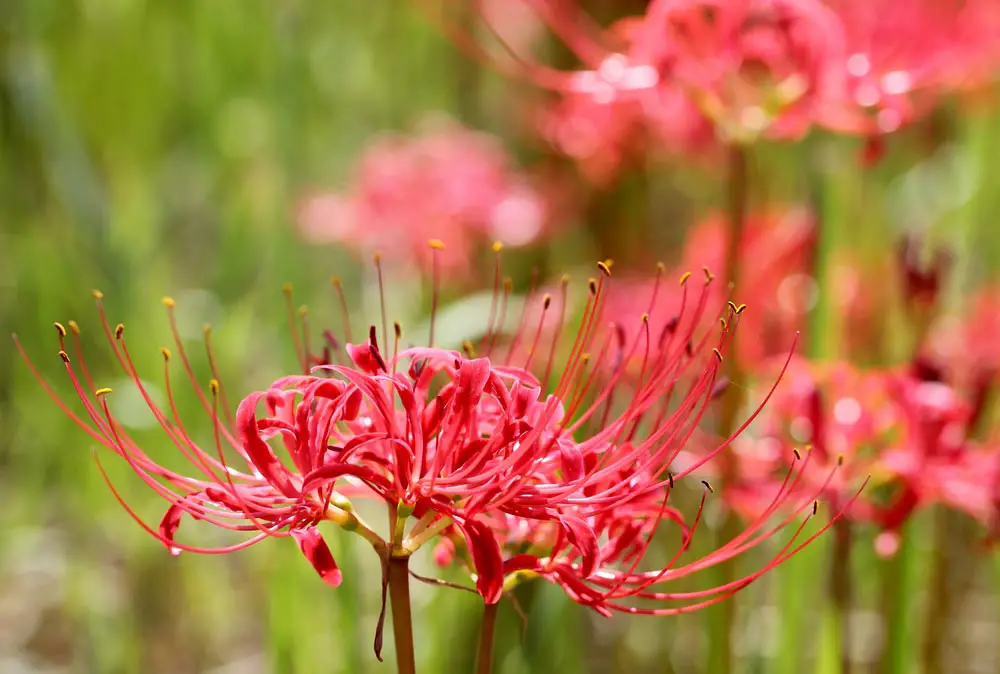
Gorgeous Red Spider Lilies grow from bulbs and are relatively easy to grow. They aren’t picky about soil types and can thrive almost anywhere with enough water. Common in the Southern U.S., they are also known as “Surprise Lilies” because they sometimes suddenly bloom during hurricane season.
13. Russian Sage
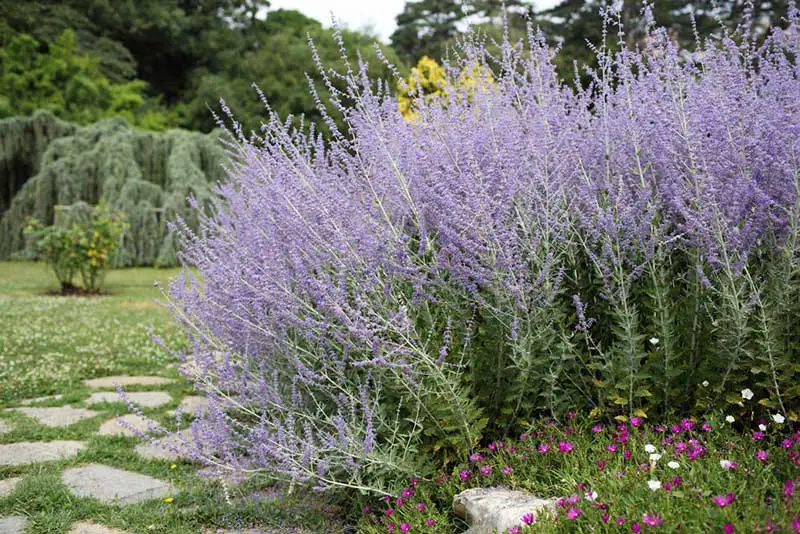
Russian sage adds a delicate haze of color to the garden from midsummer and into the fall. They boast airy, tall spires of small purple-blue flowers on semi-woody stems. This member of the mint family is drought tolerant and trouble-free. Plant them close together to avoid the plants becoming floppy and needing stakes.
14. Sedum
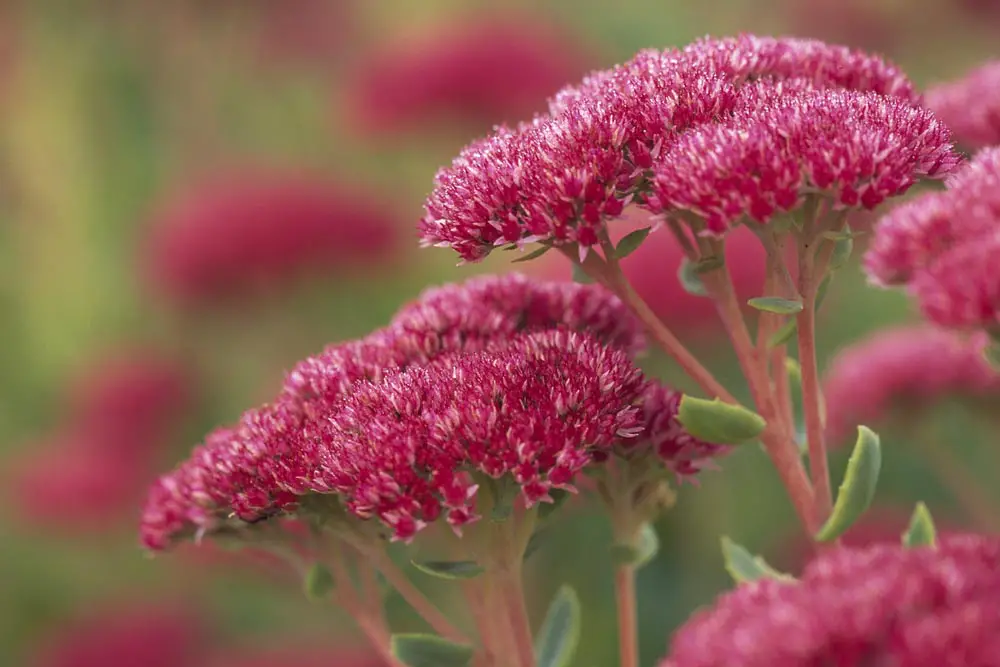
This variety of sedum is extensive, but all of them have fleshy, succulent leaves. Ground-hugging types can grow to just two inches high, while tall varieties command attention with their dense foliage and large flower heads. The flower colors include red, pink, gold, yellow, and white and they bloom in the summer and continue into the fall depending on the species.
15. Toad Lily
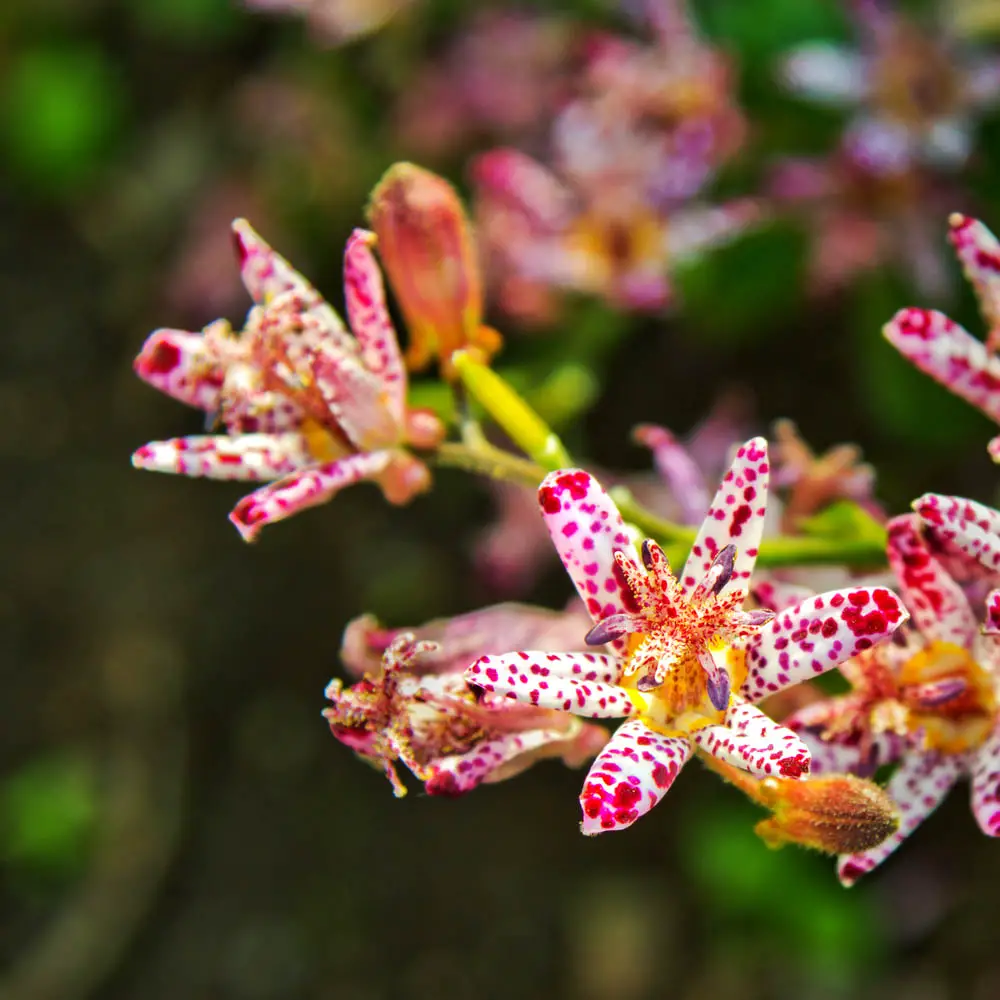
No fall garden should be without toad lilies! These Asian curiosities bloom with orchid-like flowers that demand a close look due to the delicate spotting on the petals. The flowers may be star or bell-shaped depending on which variety of toad lily is growing. Toad lily care is minimal if the plant is in moisture-rich soil.
16. Turtlehead
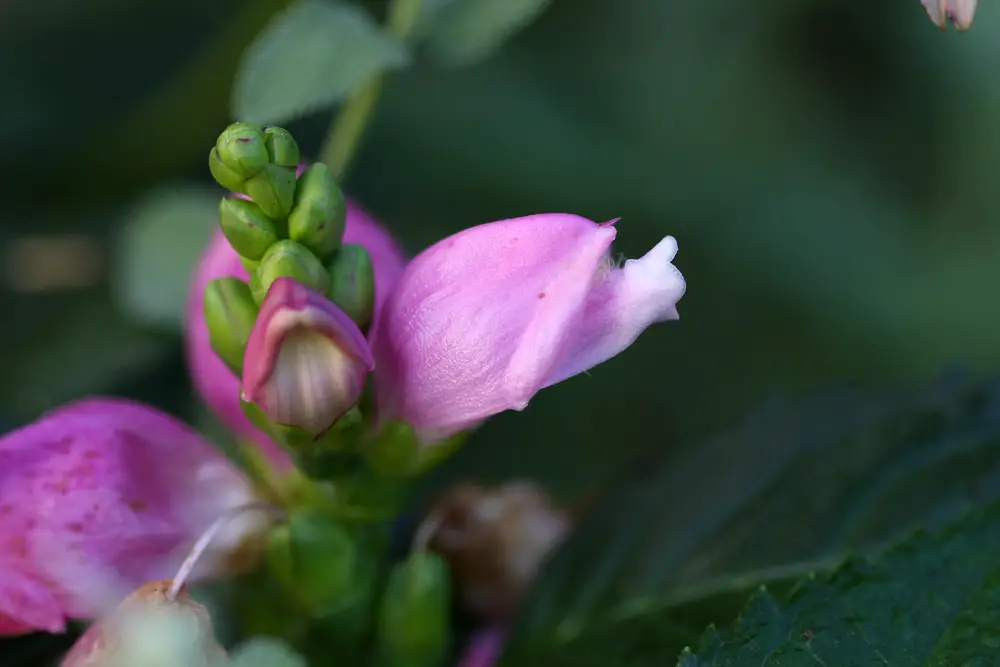
A member of the Figwort family, this interesting perennial wildflower is found in many parts of the eastern United States along stream banks, rivers, lakes, and damp ground. Turtlehead flowers are hardy and require minimal maintenance as long as they have plenty of moisture. They’ll provide lots of late-season color to the landscape.
17. Witch Hazel
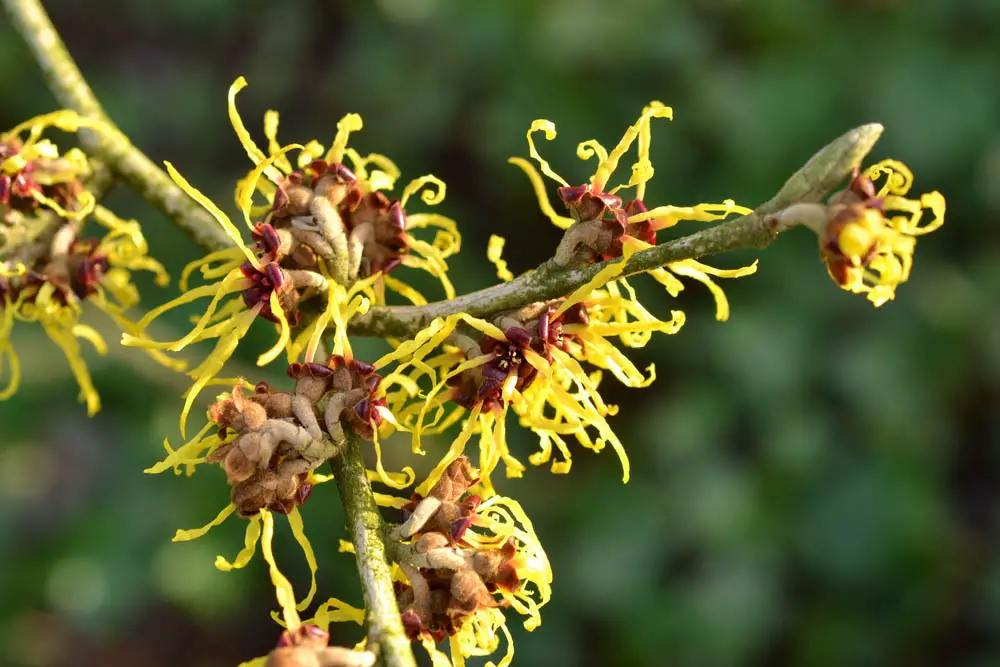
The witch hazel bush is the only tree in North America to have flowers, ripe fruit, and next year’s leaf buds on its branches at the same time. It is a small tree with fragrant yellow blooms commonly found in woody areas. Often called water-witch, its branches were once used to search and find underground sources of water and minerals.
18. Sweet Autumn Clematis

Small, pure white flowers emerge in August and September and by fall, become a silvery mass of fluffy seed heads. Sweet autumn clematis is a prolific grower as well as a bloomer. It can “take over” if left unchecked, so it is considered somewhat invasive by many. When properly maintained, the vine can be a well-behaved asset to the garden at a time of year when pretty much everything else has stopped blooming.

